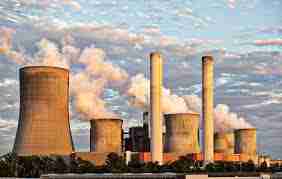The industrial flue gas treatment market plays a vital role in reducing harmful emissions generated by various industries such as power generation, cement, steel, and petrochemicals. Despite its critical importance in mitigating air pollution and helping industries comply with stringent environmental regulations, the IFGT market faces multiple barriers that slow down its growth and widespread adoption. These challenges range from high capital and operational costs to technological limitations and regulatory inconsistencies. Understanding these barriers is crucial for stakeholders—including manufacturers, policymakers, and end-users—to develop effective strategies that can overcome obstacles and accelerate market growth.
This article explores the key barriers restraining the Industrial Flue Gas Treatment market and discusses their implications for future development.

1. High Capital and Operational Expenditure
One of the foremost barriers in the IFGT market is the significant capital investment required for the installation of advanced flue gas treatment systems. Technologies such as selective catalytic reduction (SCR), flue gas desulfurization (FGD), and carbon capture units demand substantial upfront expenditure, which can be prohibitive, especially for small and medium-sized enterprises or plants in developing economies.
In addition to installation costs, operational expenses—including maintenance, energy consumption, and replacement of sorbents or catalysts—contribute to the total cost of ownership. Many industries hesitate to invest heavily in these systems unless forced by regulation or financial incentives. This cost barrier limits the adoption of state-of-the-art flue gas treatment technologies in regions where budgets are constrained.
2. Technological Complexity and Integration Challenges
Industrial flue gas treatment systems involve complex processes requiring precise engineering, integration, and customization based on the industry type and flue gas composition. The heterogeneity of emissions across sectors complicates the selection and optimization of treatment technologies.
Additionally, integrating new flue gas treatment units into existing industrial setups often poses engineering challenges. Plants built decades ago may lack the infrastructure or space to accommodate modern systems without significant redesign or downtime, increasing the reluctance to upgrade.
Technological complexity also demands skilled personnel for operation and maintenance. In regions lacking adequate technical expertise or training programs, this becomes a substantial barrier to effective implementation and long-term operation of flue gas treatment facilities.
3. Regulatory Uncertainty and Inconsistent Enforcement
While environmental regulations drive demand for flue gas treatment systems, regulatory uncertainty and inconsistent enforcement can impede market growth. In some countries, policies may fluctuate due to political changes, economic priorities, or lack of institutional capacity.
Moreover, uneven enforcement of emission standards—especially in developing nations—reduces the urgency for industries to comply, weakening market incentives. Where regulations exist but are poorly monitored, companies may opt to delay or avoid investments in treatment systems.
Uncertainty about future regulatory requirements also creates hesitation. Industries may delay upgrading systems if they anticipate that regulations will change, potentially rendering current investments obsolete or non-compliant.
4. Limited Awareness and Environmental Prioritization
In certain regions and industries, awareness about the importance and benefits of flue gas treatment remains limited. Environmental protection may not be prioritized due to competing economic challenges or a lack of public pressure.
Many small and medium enterprises may perceive flue gas treatment as an optional expense rather than a necessity, particularly when regulatory oversight is weak. This lack of prioritization reduces market penetration and slows the adoption of cleaner technologies.
Additionally, the social and economic benefits of improved air quality, such as health improvements and productivity gains, are often undervalued or overlooked by decision-makers, further limiting investments in emission control.
5. Availability and Quality of Raw Materials and Spare Parts
The efficiency and reliability of flue gas treatment systems depend on the quality and availability of essential inputs like sorbents, catalysts, and replacement parts. Supply chain disruptions or scarcity of high-quality raw materials can pose significant barriers.
For example, sorbents such as activated carbon or specific metal oxides are critical to pollutant removal. Their unavailability or high cost can limit system performance or increase operational expenses.
In addition, long lead times for spare parts and technical components can cause extended downtime and maintenance challenges, especially in remote or less developed regions.
6. Energy Consumption and Environmental Trade-offs
While flue gas treatment systems help reduce harmful emissions, some technologies consume considerable amounts of energy, thereby indirectly contributing to environmental impact. For example, certain scrubbing and catalytic systems require high operating temperatures or large power inputs.
This trade-off creates a challenge in industries aiming for overall sustainability and energy efficiency. High energy consumption not only increases operational costs but can also raise carbon footprints, partially offsetting emission reduction gains.
Finding the right balance between emission control effectiveness and energy efficiency remains a technical and economic barrier in many industrial applications.
7. Financial and Incentive-Related Barriers
Lack of access to affordable financing and insufficient incentive structures limit the ability of industries to invest in flue gas treatment technologies. While green financing and carbon credit schemes are growing globally, they are still underdeveloped or inaccessible in many regions.
Without supportive financial policies, many companies cannot justify the upfront investment required for advanced emission control systems. Additionally, limited government subsidies or tax incentives hinder the adoption of newer, cleaner technologies.
Conclusion
The Industrial Flue Gas Treatment market faces a series of intertwined barriers that impede its widespread adoption and growth. High costs, technological complexities, regulatory inconsistencies, limited awareness, and supply chain constraints all play a role in slowing progress.
Overcoming these challenges will require collaborative efforts among technology providers, governments, and industries. Policies that encourage investment through clear regulations and financial incentives, along with initiatives to build technical expertise and improve supply chains, can unlock the full potential of flue gas treatment solutions. Addressing these barriers is essential for achieving cleaner air, sustainable industrial growth, and long-term environmental benefits globally.




